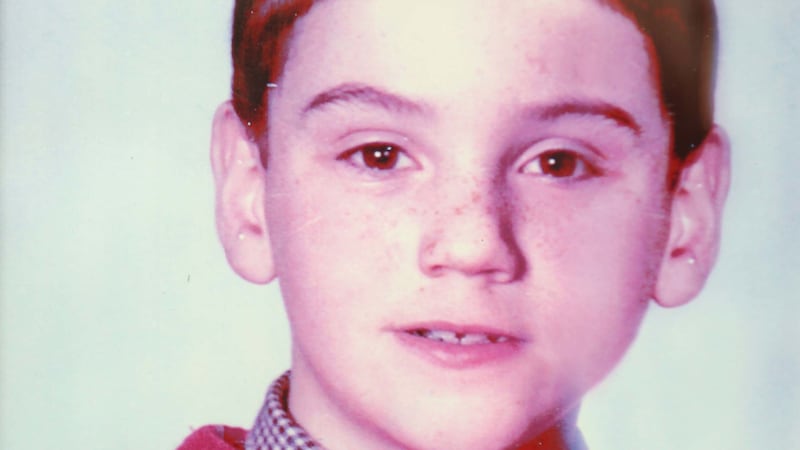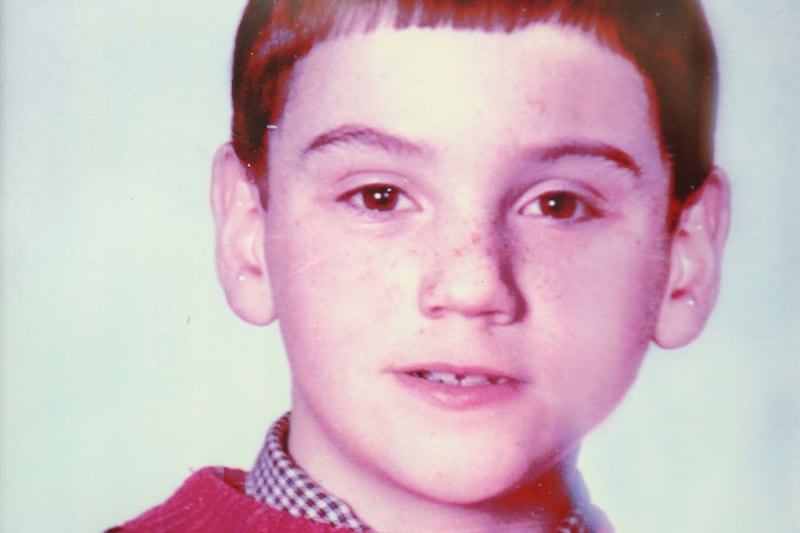The Ministry of Defence bears “significant responsibility” around the death of a 10-year-old boy in Belfast in 1975 because it did not pass onto soldiers information it had about the lethality of plastic baton rounds ricocheting off the ground.
Coroner Paddy McGurgan also said that Stephen Geddis posed no threat when he was shot by a baton round while near a civilian barricade erected during unrest in the Albert Street/Cullingtree Road area of west Belfast on August 29, 1975.
He found that the youth had been shot by a soldier, referred to as SGM15, but that he did not believe the soldier fired the round with the aim of causing serious injury or death.
The legacy inquest, the second into Stephen’s death, is one of a number ordered by former Northern Ireland attorney general John Larkin.
An original inquest held in January 1976 returned a verdict of misadventure.
Delivering his inquest findings, Mr McGurgan said that an earlier baton round which had been discharged on the same evening after soldiers came under attack in the Albert Street area had been justified.
But he then said that SGM15 and two other soldiers from the B Company of the Second Royal Anglian Regiment had moved close to an area known as the courtyard within the former Divis complex.
The coroner said: “From all of the evidence I am satisfied that immediately prior to the discharge of the baton round Stephen Geddis was in the courtyard with some of his friends and posed no threat to the soldiers.
“I am satisfied SGM15 discharged a baton round from a position on the other side of the curved wall from a range of about 50 metres of where Stephen Geddis was standing.
“On balance I favour the view that the baton round was discharged into the ground and that it bounced prior to striking Stephen Geddis.
“Though I am critical of SGM15 in deciding to discharge the baton round, I tend to the view that it is more likely that SGM15 discharged the baton round in accordance with the rules of engagement at the time which only permitted a direct strike of a target in very limited circumstances.
“I find that SGM15 probably failed to appreciate fully the lethality of employing such a technique because the Ministry of Defence had failed to tell its soldiers of information that it had as to the lethality of employing such a technique.
“The failure to instruct soldiers properly on this issue prior to August 1975 is a matter about which the Ministry of Defence, in my opinion, bears significant responsibility in the context of Stephen Geddis’s death.
“A proper instruction to the soldiers would have led to a very significant reduction in the risk of civilians, particularly young children such as Stephen Geddis, being struck with fatal consequences by a ricocheting baton round.
“It follows I am not satisfied that SGM15 discharged the weapon with the intention of causing death of serious injury to anyone.
“I do not consider that SGM15 deliberately aimed at Stephen Geddis or that he singled him out before firing.”
The coroner pointed out that SGM15 was a teenager at the time of the shooting.
He added: “He had just run from an area in Albert St where his patrol had come under a sustained attack that justified the discharge of a baton round.
“He may well have been hyped up by the events.”
But the coroner said the circumstances of the discharge of the baton round which killed Stephen, with the earlier one fired at Albert St, was “materially different”.
He said the three soldiers at the courtyard were not under any “equivalent attack”.
Mr McGurgan added: “I find that no warning was issued by the soldiers or ignored by civilians immediately prior to the discharge of the baton round.
“I find that SGM15 failed to assess or evaluate the risk or simply ignored it prior to firing.
“I do not find that these three soldiers were under attack at the time the second baton round was fired.
“I find that the three soldiers were aware that they had hit a person and that he was injured.
“I do not accept the discharge of the baton round was justified or justifiable on the evidence presented to this inquest.
“Equally I do not consider that SGM15 intended to kill or to cause serious injury to anyone.
“I find that the baton round SGM15 discharged struck Stephen Geddis, an innocent child, to the right side of his head and that this use of force was neither necessary or justified in the circumstances.
“I find that prior to the death of Stephen Geddis, the MoD were aware that significant injuries could be caused by ricocheting or bouncing baton rounds.”
The coroner said the MoD was in possession of material that said that baton rounds should not be used against children and that they should be aimed at particular parts of the body rather than bounced off the ground.
He added: “Despite this advice, the MoD maintained the baton round was to be ricocheted.
“The change to the rules of engagement in December 1975 was at least in part due to the death of Stephen Geddis.”
Stephen Geddis’s brothers Kieran, Joseph and Jim were in court in Belfast for the proceedings – while his mother Teresa watched via videolink.
Oldest brother Jim Geddis: said “We feel there is justice for a little 10-year-old boy.
“Finally it is acknowledged he was an innocent child in his own neighbourhood who was shot by a lethal weapon and killed.”







